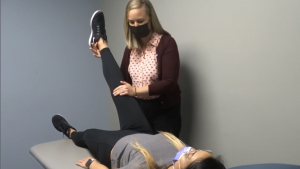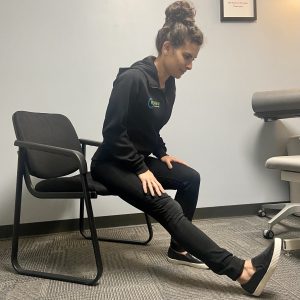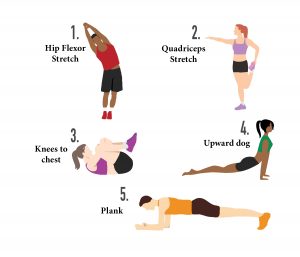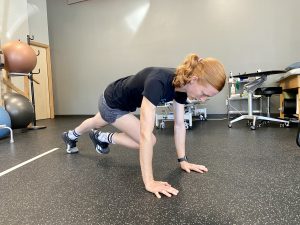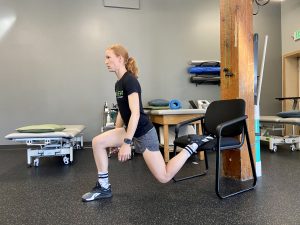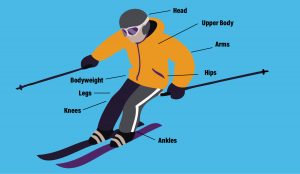When a demanding holiday season leaves you twisted in knots from the stresses of commitments, crowds, shopping and entertaining, mounds of research point to a simple solution to such anxiety: sweat away that stress by making exercise a part of your holiday routine.
Besides the obvious benefits of improving your physical condition and fighting disease, the Anxiety and Depression Association of American (ADAA) points out that exercise also does wonders for the mind.
“Exercise is also considered vital for maintaining mental fitness, and it can reduce stress,” states the ADAA in the article “Exercise for Stress & Anxiety” on its website. “Studies show that it is very effective at reducing fatigue, improving alertness and concentration, and at enhancing overall cognitive function.”
From a more scientific perspective, the Mayo Clinic points out that physical activity leads to the increased production of endorphins, which are neurotransmitters in the brain that ward off pain and help you feel good. In addition, exercise has a “meditation in motion” effect as the focus on physical activity helps you forget about the stress of your day.
“Exercise serves as a distraction from the stressor, and results in reduced muscle tension and cortisol secretion,” said Christina Geithner, Ph.D., with the American College of Sports Medicine (ACSM). “The additional benefit of exercise is that when done alone or used in combination with other stress reduction methods, it also improves physical fitness and has the potential for more profound effects in chronic disease risk reduction than other stress reduction strategies.”
Exercise also does wonders for improved self-confidence, post-exercise fatigue helps you relax during the day, and those who exercise regularly tend to sleep better. Nearly any form of exercise – walking, running, lifting weights or taking yoga classes – can serve as stress relievers, especially during particularly difficult times of the year like the holiday season.
“If your body feels better, so does your mind,” states the ADAA.
The Centers for Disease Control and Prevention (CDC) recommends that each week, adults get at least 150 minutes of moderate aerobic activity (brisk walking or swimming) – or 75 minutes of vigorous-intensity aerobic exercise (e.g., running) – plus some strength training on two or more days.
If you currently don’t abide by an exercise routine, the Mayo Clinic and the ADAA offer the followingrecommendations to get you started:
Consult your physician. If you have health concerns or just haven’t exercises in a while, it’s worth making sure your body can handle the increased workload.
Start small. Don’t try to start at the top. Set small, incremental goals that will help build your fitness level, easing you into longer workouts and the consistency of a daily routine. Be patient; you’ll get there.
Have fun. Commit to activities you enjoy and which fit your personality. If you’re competitive, take up a racquet sport. If you’re social, join a group fitness class. And if you’re more introverted, find a good solo activity.
Use the buddy system. Workout buddies help infuse an element of positive peer pressure to your exercise routine, ensuring better consistency and accountability. Plus, working out with a friend is more fun and helps your workout seemingly move along much quicker.
Mix it up. Change your workout once in a while to break up the monotony. Allow yourself to explore a diverse set of activities and disciplines that may challenge your body in different ways.
In addition, certified movement experts like physical therapists can help you establish a workout routine that’s more in-tune with your body’s strengths and limitations as well as your personal fitness goals. Contact your physical therapist to learn how.
